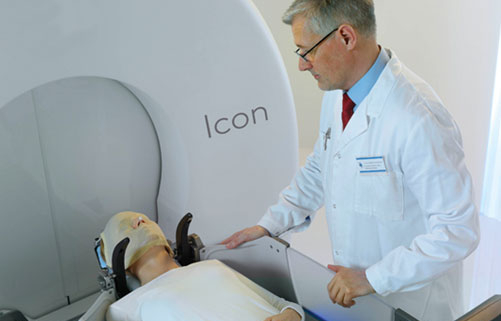How Gamma Knife Surgery Began
Cancer is something that affects up to a third of people at some point in their lives and in many cases will be fatal, but the advances in medical science over the last century have greatly reduced the numbers who have lost their battle against the disease.
Whether it is greater awareness of carcinogenic substances from tobacco to asbestos, the development of new drugs or the use of chemotherapy and radiotherapy, millions either recover completely or have their lives extended by a range of treatments.
In the midst of this comes gamma knife surgery, one of the most significant innovations when it comes to treating brain tumours.
If you are seeking treatment, you will no doubt want to ask many questions about it. Some of those will be about how it works and what happens afterwards, but it is also useful to know something of the history of his technique.
The gamma knife is not as new an invention as one might think. It was actually invented back in 1967 by Swedish doctor and neurosurgeon Lars Leksell of the Karolinska Institute in Stockholm.
Prof Leksell’s work did not begin there. Working with Prof Borje Larsson of the Gustaf Werner Institute, University of Uppsala, they first published a paper in 1951 on the potential benefits of using a focused combination of proton beams and guidance systems that could focus them on very precise areas of the brain.
By then it was known that the use of radiation could kill cancers, but the problem for patients was the side-effects this could bring, especially to the brain. Moreover, early use of radiosurgery on the brain was more to do with musculoskeletal and psychological disorders emanating from brain issues, rather than tackling tumours.
The use of guiding devices to focus all the radiation on the brain was a clear solution to need to concentrate radioactive beams, but it was an expensive and complex method and a more effective, elegant and advanced device was needed. The result was the gamma knife powered by cobalt 60 that was first used in 1967.
However, it was in the following years that the potential for a gamma knife to be used on brain tumours was established, with Proj Leksell developing a second generation device. In the years that followed, more and more medical facilities around the world started getting and using them, with new models emerging over time.
Nowadays, of course, tens of thousands of people a year around the world benefit from gamma knife surgery, including patients here in Vienna.
For Prof Leksell, the development of the gamma knife really had been a lifetime’s work. Born in 1907, he started studying as a neurosurgeon in 1935. This meant he was already into middle age when he was collaborating with Prof Larsson in the 1950s and beyond it as the first and second gamma knife devices were developed.
However, by the time he passed away suddenly at the age of 78, Prof Leksell will have known that he had helped bring about a major step forward in the treatment of brain cancer, one people benefit from today and will continue doing long into the future.



